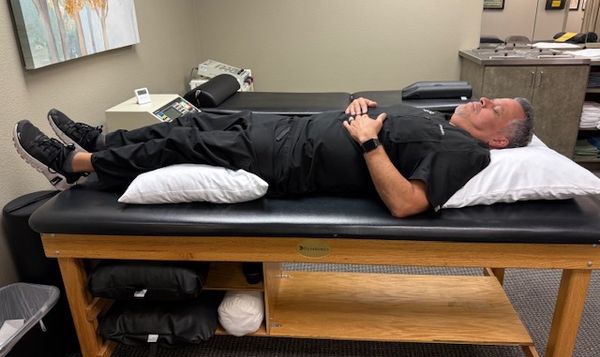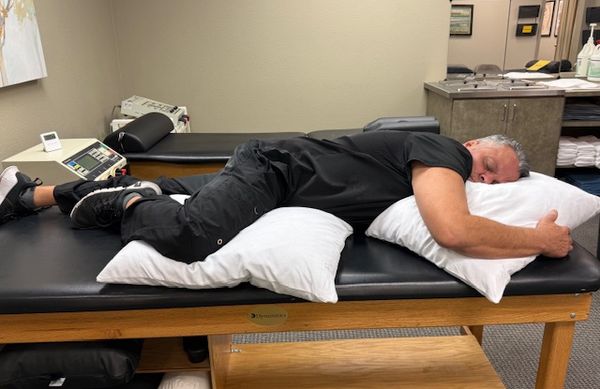The Best Sleeping Positions:
B. Jeffrey Jolley, D.C., D.A.C.N.B.
Getting quality sleep isn't just about how many hours you sleep but how you sleep matters just as much. Your sleeping position can affect your spine, digestion, breathing, and even the health of your skin. Whether you are trying to relieve back or neck pain, minimize snoring, or just want to sleep better overall, we will discuss the different sleeping postures and show you the best way to support the spine in each position.
1. Sleeping on Your Back
If you're looking for the most balanced posture, sleeping on your back is probably the best.
Benefits:
- Keeps your spine in a neutral position
- Reduces pressure on joints
- Helps prevent wrinkles (your face isn’t smashed into a pillow)
- Can ease acid reflux—especially with your head slightly elevated
Disadvantages
- May worsen snoring or obstructive sleep apnea
- Not ideal for late-stage pregnancy
Pro Tips: Place the pillow just below the shoulders as indicated below as well as a placing a pillow under your knees to maintain the spine’s natural curve and ease lower back tension.

2. Sleeping on Your Side
Side sleeping is popular and for good reason. It supports spinal alignment and is particularly helpful for snorers and pregnant people.
Benefits:
- Reduces snoring and symptoms of sleep apnea
- Improves digestion (especially lying on your left side)
- Boosts circulation during pregnancy
Disadvantages
- Can cause shoulder or hip pressure
- May lead to facial wrinkles over time
Left vs. Right Side:
- Left side: Better for heartburn and digestion
- Right side: Might increase acid reflux in some people
Pro Tips: Use a pillow that will keep your head and neck aligned as well as a pillow between your knees to maintain a neutral spine and relieve pressure on your hips and lower back. (My choice, especially for my patients who have chronic neck pain and the one I use, is a Serta Gel Memory Foam Cluster Bed Pillow which is available in a 2 pack at Sam’s Club for less than $15). One of the benefits is the ability to adjust the size of the pillow by removing some of the foam to the ideal size that fits your body. But before you start removing foam to adjust the size, sleep with it for 4-5 nights. You may just need to get used to it.

3. Sleeping on Your Stomach
Sleeping on your stomach is probably the least desirable position especially if you suffer from neck pain.
Disadvantages:
- Strains the neck and spine
- Can lead to chronic back and neck pain
- Compresses internal organs
- May cause nerve irritation or numbness
One Small Benefit:
- Might slightly reduce snoring in some cases
Pro Tips (if you are unable to sleep any other way): Hug the pillow so it goes below your shoulders as indicated below and place another pillow under your stomach and hips to decrease the lumbar curve and reduce strain to the spine. Some people like to use a body pillow.

Final Thoughts
There is no one size fits all sleeping position, but certain postures offer more benefits than others. For most people, side sleeping (especially on the left) or on your back with good support will provide the best results. If you have specific issues like back pain, acid reflux,
sleep apnea adjusting your position can make a noticeable difference.
Still having problems with neck or back pain after changing your sleeping posture? Give us a call at 480-633-8293 or schedule online.
